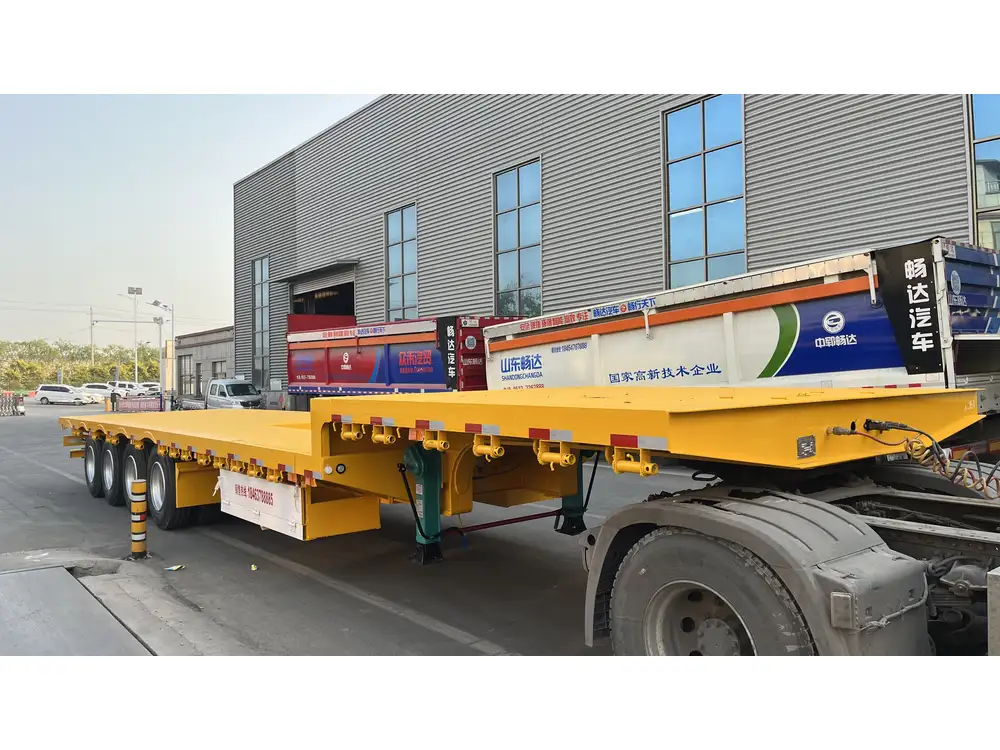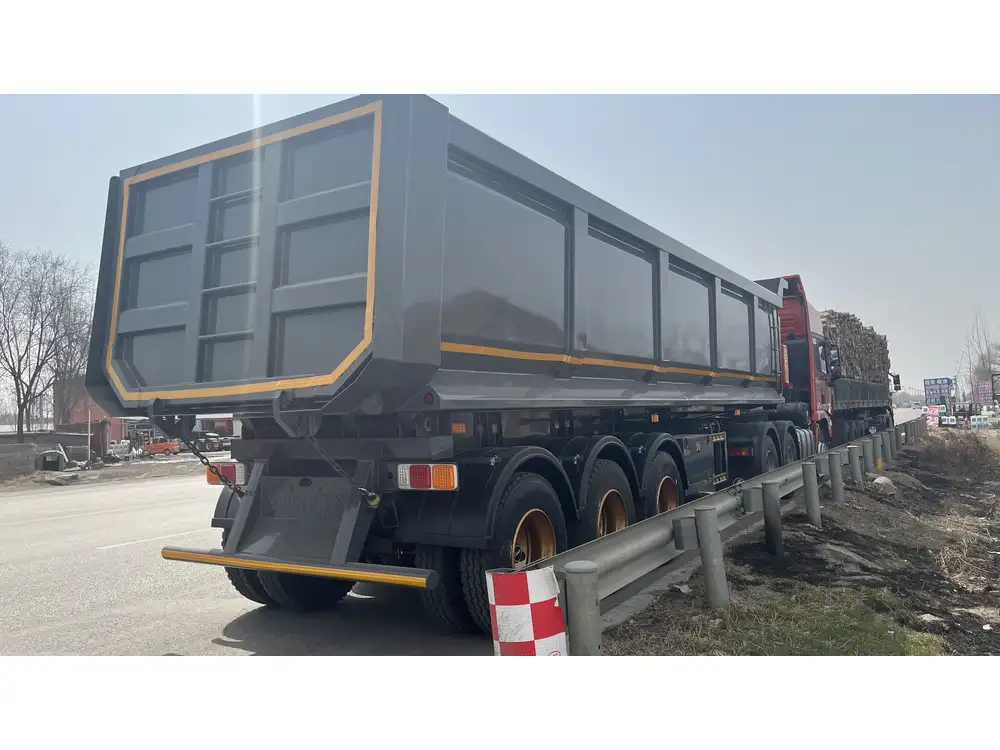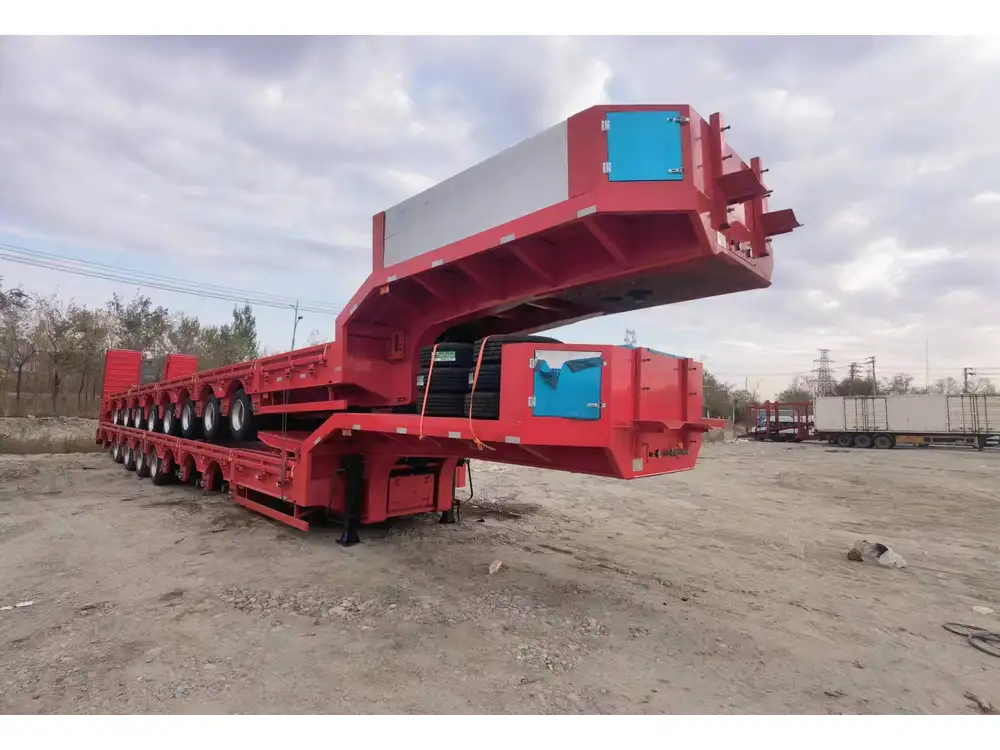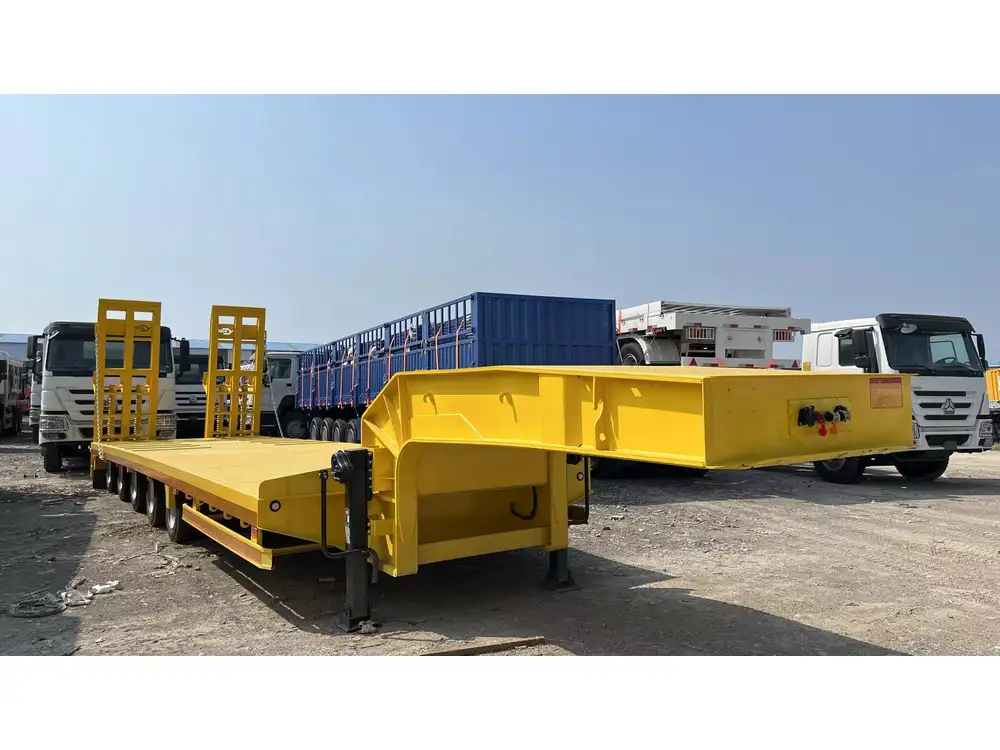When it comes to the transportation industry, understanding the dimensions of trailers is critical. This article focuses on the specifics of a 53-foot trailer, a standard size used across various segments of freight transport. We aim to provide in-depth insights into the width, advantages, regulations, and practical applications of these trailers.
Table of Contents
- What is a 53-Foot Trailer?
- Official Dimensions and Regulations
- Why Choose a 53-Foot Trailer?
- Comparative Advantages of Trailer Dimensions
- Common Uses for 53-Foot Trailers
- Weight Capacity and Compliance Guidelines
- Conclusion
What is a 53-Foot Trailer?
A 53-foot trailer is a type of semi-trailer commonly used for transporting goods over long distances. These trailers are typically designed for use with tractor units, allowing for efficient hauling of larger shipments. Their length, which measures approximately 53 feet from end to end, can vary slightly depending on the specific model and manufacturer.

Key Specifications:
- Length: 53 feet (16.15 meters)
- Width: Generally standardized at 102 inches (or 8.5 feet)
- Height: Varies by model but typically around 13.5 feet
Official Dimensions and Regulations
Understanding the official dimensions and regulatory standards that govern trailer sizes helps manufacturers and fleet operators make informed decisions.
| Attribute | Standard Measurements |
|---|---|
| Length | 53 feet (16.15 meters) |
| Width | 102 inches (8.5 feet) |
| Height | Up to 13.5 feet |
| Gross Vehicle Weight | Limited by state regulations |
| Axle Configuration | 2 or 3 Axles |
Width Specifics
The width of a 53-foot trailer is predominantly set at 102 inches (or 8.5 feet). This matches the federal standards in the United States, allowing for optimal loading capacity without exceeding the permissible width for road travel. Some states may have unique regulations, so it’s crucial to verify local laws, especially regarding the transport of oversized loads.

Why Choose a 53-Foot Trailer?
The selection of a 53-foot trailer comes with numerous advantages:
- Increased Cargo Volume: These trailers can accommodate a larger volume of goods compared to their shorter counterparts, optimizing shipping efficiency.
- Versatility: Suitable for a wide range of cargo types, including dry goods, refrigerated items, and specialized freight.
- Cost-Effectiveness: More goods can be transported per trip, leading to reduced fuel costs and enhanced profitability.
- Enhanced Stability: The length and distribution of weight can provide better stability during transit, especially when properly loaded.
Comparative Advantages of Trailer Dimensions
When evaluating 53-foot trailers against other standard sizes, it’s essential to consider the following dimensions:
| Trailer Type | Length | Width | Cargo Volume |
|---|---|---|---|
| 53-foot Dry Van | 53 feet | 102 inches | Up to 3,800 cubic feet |
| 48-foot Dry Van | 48 feet | 102 inches | Approximately 3,200 cubic feet |
| 40-foot Flatbed | 40 feet | 102 inches | Around 2,000 cubic feet |
Volume and Weight Considerations
The increased length of a 53-foot trailer allows for more cargo space, which translates to potentially higher revenue per trip. However, one must also factor in the weight limits imposed by law:
- Maximum Weight: Most 53-foot trailers are rated to carry up to 45,000 pounds of cargo, depending on configurations and licensing.
- Payload vs. Gross Weight: Understanding the distinction between payload (weight of cargo only) and the vehicle’s Gross Vehicle Weight (GVW) is crucial for compliance.

Common Uses for 53-Foot Trailers
The versatility of 53-foot trailers makes them a preferred choice across several industries. Below are some typical applications:
- Retail Delivery: Transporting consumer goods from warehouses to retail locations.
- E-commerce: Facilitating shipments for online retailers, ensuring inventory is distributed efficiently.
- Food and Beverage: Used for delivering perishable items, often equipped with refrigeration units.
- Construction: Moving materials, tools, and equipment to job sites.
Industry-Specific Considerations
Each industry has unique requirements regarding trailer design, load securing methods, and regulations. For instance, food-grade trailers must adhere to health guidelines, while construction trailers need particular design features for handling heavy and bulky items.
Weight Capacity and Compliance Guidelines
As a manufacturer, ensuring compliance with weight restrictions and legal standards is paramount. Here’s a breakdown of guidelines that apply:
Federal Highway Administration (FHWA) Limitations: Enforces a maximum gross weight of 80,000 pounds for trucks including trailers in interstate commerce. This includes all axles combined.
Bridge Laws: Different states enforce varying bridge law standards, which dictate the weight limits based on axle configurations and distances between axles. Familiarity with these laws can prevent legal issues and penalties.
Loading Strategies: Implementing appropriate loading techniques is essential:
- Ensure weight distribution across axles to maintain balance.
- Utilize load bars, straps, and tarps for securing cargo to prevent shifting during transit.

Conclusion
In summary, understanding the dimensions and specifications of a 53-foot trailer is crucial for anyone in the transportation and logistics industry. The standard width of 102 inches not only maximizes cargo capacity but also enables compliance with federal and state regulations. This comprehensive overview highlights the benefits, applications, compliance guidelines, and considerations that every fleet operator and manufacturer must be cognizant of.
Whether you are a manufacturer seeking to design top-notch trailers or a logistics professional looking to enhance operational efficiency, grasping these technical insights will pave the way for smarter decision-making in the world of semi-trailers. By employing a strategic approach to trailer selection and adherence to regulations, businesses can leverage the full potential of 53-foot trailers to achieve sustainable growth in an increasingly competitive landscape.



